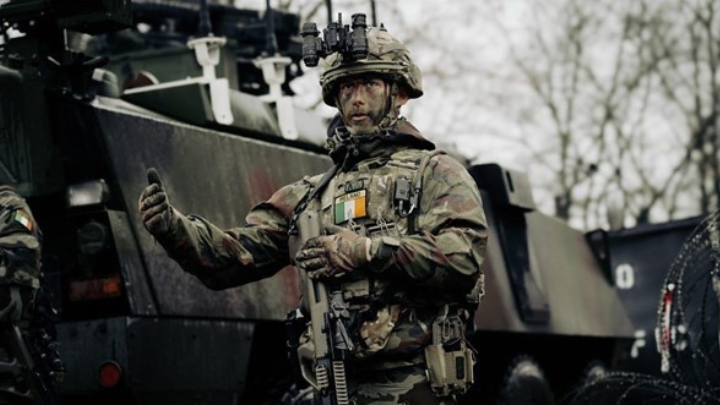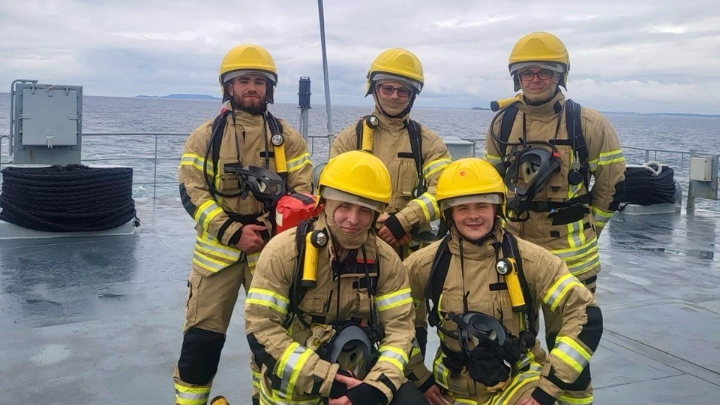
What the Irish Defence Forces do:
Defend the State: To defend the State against armed aggressions; this being a contingency, preparations for its implementation will depend on an ongoing Government assessment of the security and defence environment.
Aid the Civil Power: To Aid the Civil Power/Aid to the Civil Authority (meaning in practice to assist, when requested, the Garda Síochána, who have primary responsibility for law and order, including the protection of the internal security of the State).
Multinational Peacekeeping & Humanitarian Relief: To participate in multinational peace support , crisis management and humanitarian relief operations in support of the United Nations and under UN mandate, including regional security missions authorised by the UN.
Maritime Security & Fishery Protection: The Naval Service is the State’s principal seagoing agency with a general responsibility to meet contingent and actual maritime defence requirements. It is tasked with a variety of defence and other roles. Defence roles include defending territorial seas, deterring intrusive or aggressive acts, conducting maritime surveillance, maintaining an armed naval presence, ensuring right of passage and protecting marine assets.
Ceremonial: The Defence Forces participates in various national ceremonies throughout the year. Each service within the Defence Forces has a designated role to play during these ceremonies. Depending on the ceremony the Defence Forces involvement may consist of Guards of Honours, Gun Salutes and Musical recitals.
The Government remains committed to on-going recruitment to the Defence Forces to reach the establishment level of 9,500 personnel as set out in the White Paper on Defence.
The Permanent Defence Force consists of an Army, an Air Corps and a Naval Service.

The Army is organised on conventional military lines providing a sufficiently flexible structure to carry out all the roles assigned by Government. The Army is a standing force and provides the primary capabilities for joint military operations at home and combined military Peace Support Operations abroad.
The army is divided into three Brigades; 1 Brigade (Cork, Galway, Kilkenny, Limerick), 2 Brigade (Donegal, Dublin, Louth, Westmeath); Defence Forces Training Centre (DFTC) in Kildare. The Army Ranger Wing, the Equitation School and the Defence Forces School of Music fall within these three Brigades.
Within the Army structure there are different corps. The Army Corps support the seven combat functions – Manoeuvre, Fire Support, Air Defence, ISTAR, Mobility, Combat Service Support jkkkand Command and Control. The Army corps consist are: Infantry Corp, Artillery Corp, Cavalry Corp, Engineer Corp, CIS Corp, Ordnance Corp, Medical Corp, Transport Corp and Military Police Corp.

The Naval Service is the State’s principal seagoing agency with a general responsibility to meet the contingent and actual maritime defence requirements. It is tasked with a variety of defence and other roles.
The Naval Service provides the maritime component of the State’s Defence capabilities and is the State’s principal seagoing agency. It protects Ireland’s interests at and from the sea and protecting Ireland’s Sea Lines of Communication, Fisheries and offshore resources. The Naval Service operates jointly with the Army and Air Corp.
The Naval Service fleet comprises of one Helicopter Patrol Vessel (HPV), three Offshore Patrol Vessels (OPV), two Large Patrol Vessels (LPV) and two Coastal Patrol Vessels (CPV). Each vessel is equipped with the state of the art machinery, weapons, and communications and navigation systems.

The role of the Air Corp under the Defence Act is to contribute to the security of the State by providing for the Military Air Defence of its airspace. However in times of peace it is more usual for the Air Corps to fulfil the roles assigned by Government through the deployment of well-motivated and effective Air Corps.
The Air Corp is the air component of the Permanent Defence Forces, based at Casement Aerodrome, Baldonnel, Co. Dublin. The men and women who serve in the Air Corps, are making a unique and significant contribution to fulfilling the roles, both primary and secondary as assigned by the government.
The Reserve Defence Force mirrors the Permanent Defence Force (PDF). Units are rationalised and amalgamated to facilitate this structure. The RDF is organised into the First Line Reserve and a Second Line Reserve. The First Line Reserve comprises of former members of the Permanent Defence Force and the Second Line Reserve comprises an Army Reserve and a Naval Service Reserve.
 The Army Reserve is organised on an integrated basis. In practice, Reserve units for sub-units of Permanent Defence Forces units, to which they are affiliated. The particular Permanent Defence Forces unit is then responsible for the equipping and training of its Reserve elements (sub-units).
The Army Reserve is organised on an integrated basis. In practice, Reserve units for sub-units of Permanent Defence Forces units, to which they are affiliated. The particular Permanent Defence Forces unit is then responsible for the equipping and training of its Reserve elements (sub-units).

The Naval Service Reservists are trained in many aspects of nautical and military training. Training includes motorboat handling, sail training, navigation, marine communications, weapons training, fire fighting and sea survival.
The Naval Service Reserve (NSR) is organised in five units.
One each in Cork, Dublin, Limerick, Waterford and a Technical Support Unit. The NSR augments the crews of Naval Service vessels during Operational patrols of Ireland. The NSR conducts its own stand-alone operations within their respective ports, such as sighting reports and intelligence gathering.
For more information click here.




